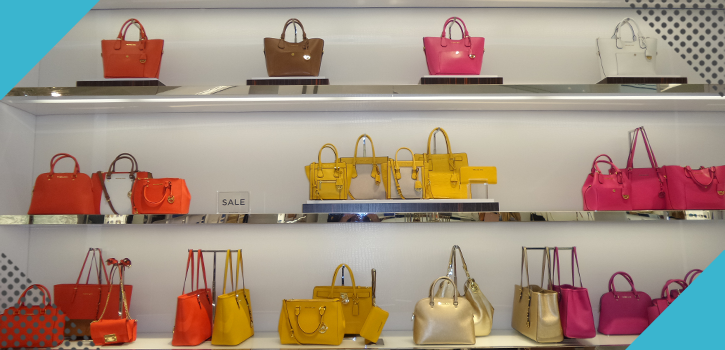David Mingeon, CEO of Havas Paris, reported on the results of the Shopper Observer study in the opening session of Paris Retail Week. It’s an opportunity to learn more about consumer behaviour, expectations and needs and the major trends retailers will have to follow to stay on track. These 5 major retail trends for 2019 mark the beginning of the Smart Phygital era!
Learn more about cross-border ecommerce in our updated guide
 1. From the buying journey to the journey of life: how to reach out to customers?
1. From the buying journey to the journey of life: how to reach out to customers?
Much has been said in recent years about the importance of multi-channel communication for brands. This objective is becoming almost obsolete: we now need to invent brands and products that reach out directly to consumers. As exemplified by the dead malls in the USA (some of these large shopping centres are completely deserted) or the closure of 800 American Toys R Us points of sale, consumers are increasingly moving away from physical stores and devoting less time to shopping than before.
In fact 50% of American people are increasingly reluctant to spend time shopping… and 28% of American people think shopping is more of a chore than before.
This means that retailers have to find new ways to connect with the consumer and make purchasing part of their daily routine again. Although the figure is only almost half as high as in China, 48% of American consumers think they can do without physical stores altogether.
Coupled with the growing desire to be able to make a purchase anywhere and at any time, this figure should make retailers think about how they can break down the boundaries between homes and stores. For example, Toyota has devised an e-Pallet system, a kind of mobile shop in the form of a full-automated concept car. Startups have also addressed this issue, such as the Swedish Wheelys or San Francisco based Robomart.
This type of solution also responds to a growing trend among younger generations: staying at home rather than going out. Retailers must therefore work twice as efficiently on another aspect: delivery. Same-day delivery is already old hat; we’re talking instant delivery. If people don’t go to the store anymore the store has to come to the consumers: new services from Amazon and Walmart using keyless smart locks have opened up the home for in-house delivery.
 2. The conversational age is really dawning: the golden age of smart speakers is just around the corner!
2. The conversational age is really dawning: the golden age of smart speakers is just around the corner!
Long touted as a future trend but today a reality: 65% of American people think that conversational assistants will make their lives easier. In France, 63% of people even think that speech could very well replace the keyboard or computer screen.
While the uptake of smart speakers is already very high in the United States, it’s still quite low in Europe, as are the features available via this medium. But brands and retailers have a vested interest in getting up and running: within 2 years 50% of internet searches will be done via conversational assistants.
This also means that the rules of the game for SEO are set to change. Companies will have to drill down into the subject in order to move from a keyword search to a structured question in natural language to be included in the very selective list of the first 3 results and even to be suggested as a product solution in generic requests.
Smart speakers may also pave the way for new forms of brand advertising: for example, a consumer looking to buy toothpaste could be offered the Colgate brand by their voice assistant.
Points of sale could also be developed using conversational assistants; it would be conceivable to have physical stores where smart speakers would advise customers.
 3. From customer care to healthy manufacturing : when transparency & quality become the watchwords of retail
3. From customer care to healthy manufacturing : when transparency & quality become the watchwords of retail
There’s an increasing number of consumers who believe that many everyday products are dangerous for their health. Even products that we thought were healthy are now being singled out: grapes, celery, nappies… pesticides and toxic products are invading our fridges and cupboards. Some everyday products from sugar to screens are portrayed as new drugs. This unease which previously was mainly focused on food products now affects all sectors of retail: cosmetics, waves, building materials…
It’s difficult for consumers to feel confident in this climate: lots of consumers do not trust retail chains to help them make better purchasing decisions. People are more and more sensitive to the impact of the products they buy: the promise of quality is becoming a market standard and craftsmen and small traders naturally command much greater trust in this regard.
Some models are completely rethinking the offer or the store to meet environmental challenges, such as The Goods Mart supermarkets or the allbirds footwear brand, which is resolutely committed to protecting the environment and better purchasing.
Brands should nowadays help consumers to make good purchasing choices, and this also involves education. The likes of Tesco, Auchan and Intermarché have clearly understood this: they must meet transparency expectations in the manufacturing and distribution process. The supply chain must be completely traceable. It also provides an opportunity for companies to develop a range of solutions to meet these transparency and reassurance requirements.
 4. Big data safe data sale data: is data security the new brand differentiator?
4. Big data safe data sale data: is data security the new brand differentiator?
“We have updated our privacy and user data management policy”. You probably all got a lot of emails along these lines around the 25th of May 2018. The introduction of the General Data Protection Regulation has put a stop to the practices of many retail chains with regard to the collection and use of their customers’ data.
Data is very expensive; some even see in it a new virtual currency. Data collection and processing can be a great revenue source for brands and retailers in particular. And 24% of American people (whether they consent to everything or are just not very careful) say they provide their personal data without a second thought:
- To get discounts (70%)
- To get information they are interested in (73%)
- To be rewarded for their loyalty (67%)
Unfortunately, between the commodification of data and intrusion into private life, GAFA and other major brands also worry consumers a lot: 65% of American people feel more and more spied on by brands and 63% even fear that their private lives will be exposed.
Consumers face a real dilemma: technology and data make it possible to overcome conflicting opinions with consumers. They can simplify the consumer’s life… as long as he agrees to be tracked. The current trend seems to be towards consumer awareness: many consumers all over the world say they are worried about the amount of data that brands have on them and 65% of American people are willing to pay more for a brand that demonstrates ethics in data management.
But can we really move to data-free retail? Have increasingly personalized experiences while at the same time no longer giving out any personal information? If we look at advertising, for example, we can see that everything is built and designed around data collection: For example, since its last update, Apple has offered the option of enabling “limited ad tracking”. Except that the consumer will see the same number of ads as before…. they will simply be less targeted and therefore less relevant.
A “data-free” system therefore seems almost inconceivable today; however the security of the data collected and brand data management policies could become a real point of differentiation.
 5. The fashionable new discount: why brands must democratize access to luxury goods
5. The fashionable new discount: why brands must democratize access to luxury goods
67% of the American consider themselves more demanding than ever before: this means that they are far from ready to give up on quality… but not that they are prepared to pay more. The old adage of “you get what you pay for” seems to have been consigned to oblivion. In France for example, 75% of people don’t think that quality necessarily goes hand in hand with high prices. Expensive doesn’t mean better! Consumers can now look at customer reviews on the internet to get feedback on whether a product is good or not, regardless of the price it costs.
Brands, particularly in the retail sector, therefore have every interest in democratizing access to luxury goods, or at least top-of-the-range luxury goods, and provide their customers with incredible experiences. Because this is exactly what’s expected of them: 62% of American people think that companies that are successful are those that put an end to privilege and democratize access to products; and 62% think that brands should not simply sell products but should offer meaningful experiences. And they are 91% to think so in China.
This is what the Citizen M hotel chain does, for example, by offering its customers “100% democratic 0% aristocratic” luxury. Its hotels are extremely luxurious, the rooms are ultra-personalisable and hi-tech… and the prices are well below the market rate for this type of service. This chain has got it all figured out: it offers tailor-made products at a standardised price. A vision that 67% of American people support. This is also the case for the Shoes of Prey brand, which sells custom-made shoes with a design that can be personalised. The result? Over 6 million one-of-a-kind pairs have been sold since the company was founded in 2009.
Another angle chosen by some brands in order to offer high quality at a lower cost is removing the middleman. 66% of American people think that there are too many intermediaries in retail and 69% would prefer to buy directly from the producer / manufacturer. Luxury footwear brand Hiima is part of this trend: its products are handcrafted in Portuguese workshops working closely with the company’s founders. By eliminating all intermediaries and selling only a small quantity of each model online or on pre-order they can offer very high quality shoes… and about three times cheaper than other luxury brands.
The Beauty Pie cosmetics brand has chosen the subscription model: by paying $10 per month consumers can access luxury cosmetics at a low cost. How? There’s strength in numbers! The brand harnesses the power of its large community of subscribers to buy products at cost price and resell them on its own site. By eliminating the entire logistics chain, Beauty Pie reduces product prices by 80 to 90%!
Not surprisingly, brands will have to step up their energy and inventiveness to meet new consumer demands and it would seem that everything is a question of balance: between the physical store and the digital store, between human and artificial intelligence, between profitability and transparency, between intrusion and personalization and finally between quality and price. It’s a difficult balancing act and above all a very precarious one: brands can lose consumer confidence at any moment. Each one will have to find its own unique way of reaching out to its customers and developing a trusting commercial and human relationship with them… for smarter, more phygital retail!
And for more international retail look no further than our white book on cross-border sales!


 1. From the buying journey to the journey of life: how to reach out to customers?
1. From the buying journey to the journey of life: how to reach out to customers? 2. The conversational age is really dawning: the golden age of smart speakers is just around the corner!
2. The conversational age is really dawning: the golden age of smart speakers is just around the corner! 3. From customer care to healthy manufacturing : when transparency & quality become the watchwords of retail
3. From customer care to healthy manufacturing : when transparency & quality become the watchwords of retail 4. Big data safe data sale data: is data security the new brand differentiator?
4. Big data safe data sale data: is data security the new brand differentiator? 5. The fashionable new discount: why brands must democratize access to luxury goods
5. The fashionable new discount: why brands must democratize access to luxury goods




